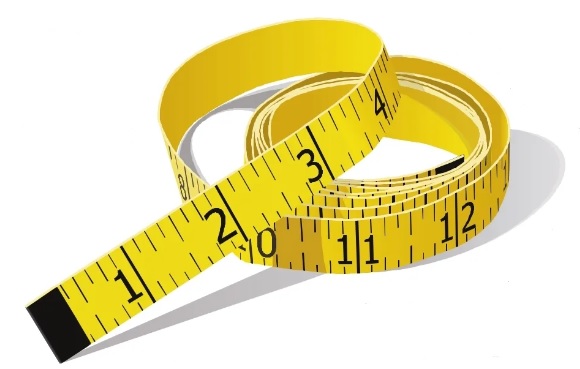Surveyors’ Corner
We are upon a solemn moment in the land surveying profession. Yes, we’ve all known for a while that this end-of-era moment was coming, but now it ends without pomp or circumstance, without the formality of an obituary, without even a memorial service. We bid adieu to a long-faithful companion that, for all intents and purposes, has been a benchmark of this country for much longer than its official 156 years. The U.S. survey foot leaves us on December 31, never to trudge another mile along a Gunter’s Chain or a GNSS measurement. On January 1, 2023, the U.S. survey foot gets booted aside to finally, officially, and unceremoniously to be replaced by the international foot. Celebrate the coming of another year however you traditionally do, but at least be mindful that when the ball drops, it takes the U.S. survey foot with it. And just like that the entire surveying world will be standardized, measuring in unison for the common good, albeit at the expense of an old friend.
From transits to total stations, theodolites to satellites, the U.S. survey foot has been by our side (actually at our feet), and it is the intention of this column to thank it, because no one else has jumped to celebrate a job well done.
Yes, it’s better for everyone–though some continue to argue that point. The entire world on a standardized unit of measure is something that hasn’t happened often in history.
The change has been afoot for years. Buried in the October 5, 2020, edition of the Federal Register—the daily publication that meticulously and officially records the minutiae of the federal government—was the notice “Depreciation of the United States Survey Foot” followed by nine-and-a-half pages of explanation and description, which basically amounted to this as summed up by the National Institute of Standards and Technology:
“To resolve problems due to simultaneous use of two nearly identical versions of the foot, collaborative action is being taken by NIST and the National Geodetic Survey (NGS), National Ocean Service (NOS), National Oceanic and Atmospheric Administration (NOAA). With the goal of providing national uniformity in the measurement of length, the U.S. survey foot will be phased out as part of the modernization of the National Spatial Reference System (NSRS). From this point forward, the international foot will be simply called ‘the foot.’”
You know the backstory. Since 1866 (though not confirmed by congress until 1893), the legal definition of the foot in the United States has been based on the meter, exactly 1200/3937 meter. In 1959, the relationship of the foot to the meter was officially refined as 0.3048 meter. According to the NIST: “This change was made to support United States industry and international trade. It resolved a long-standing discrepancy with the definition used by different organizations within the United States and in other countries.”
Still, the U.S. survey foot kept its foot in the door because of the exception that temporarily allowed its use exclusively for geodetic surveying. The U.S. survey foot was supposed to expire with the readjustment of the U.S. geodetic control networks in 1986. But, like that bunny with the batteries, it just kept going and going and going.
Alas, the U.S. survey foot is finally running on empty.
The government spent years doing its due diligence. The decision made official more than two years ago took time and manpower to collect input from the public (mostly surveyors) and officials. Printed reports consumed reams of paper. Everything was checked and re-checked, posted and considered, thought about, talked about and bandied about in all of the by-the-book ways the federal government is legally obliged to follow to make even the most basic decision.
On one hand I would argue that never has so much resource been devoted to so little. The difference we’re talking about here amounts to two parts per million the international foot’s measurement of 0.3048 meters and the survey foot’s slightly larger 0.30480061 meters.
If you were to survey my property line using both standards, the difference would equate to less than the thickness of a blade of grass. On a football field, the difference would amount to about the square footage of a cocktail napkin, an area so insignificant that it likely wouldn’t have changed a single call on a toe-tapping wide receiver in the entire history of the NFL.
On the other hand, that extra 0.0061 meters can make a significant difference when working with large coordinate values typical for plane coordinate systems. Using the international foot, the United States is actually 28.3 feet wider.
It may seem like kicking something so American as the survey foot aside and adopting the international foot comes with a tinge of socialism by acquiescing to rest of the world. But the fact is congress adopted the official survey foot measurement as a fraction of a meter, so the survey foot has always been based on the meter.
As some states in America use the survey foot and others use the international foot, it has at times created embarrassing mistakes.
Among the nine-and-a-half pages of explanation in the Federal Register was this: “A roadway alignment is surveyed in international feet using a low-distortion projection and laid onto a global image under the assumption the survey is the U.S. foot definition. Locally all alignment points fit well vs. record distance and bearings. However, when cast onto the global image map the roadway alignment is 12 feet north and 45 feet east of the roadway on the image. The roadway construction plans that use global aerial images as a background cannot be completed until the surveyed line work is in coincidence with the global image.”
At the stroke of midnight on the final day of 2022, America will lose one of its two feet. How smoothly can we move forward on just one foot?

